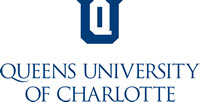Below is a summary of the abstract you submitted. Presenting author(s) is shown in bold.
If any changes need to be made, you can modify the abstract or change the authors.
You can also download a .docx version of this abstract.
If there are any problems, please email Dan at dar78@pitt.edu and he'll take care of them!
This abstract was last modified on May 3, 2019 at 9:49 a.m..

Bacteriophages “Nucci” and “MCubed” were discovered during Queens’ third year in the SEA-PHAGES program. Both phages were identified from soil samples collected from a chicken coop in Charlotte, NC. Using the host Microbacterium foliorum (M. foliorum), enriched isolation methods were carried out by students in the biology department to locate the presence of phage. Purification and amplification techniques followed. Plaques from “Nucci” were clear, round, and typically less than 1 mm while “MCubed” displayed round, hazy plaques that were approximately 1mm. Transmission Electron Microscopy revealed that both phages exhibit the siphoviridae morphotype. While “Nucci” has a head diameter of 60 nm and a tail of 121 nm, “MCubed” has a head diameter of 51 nm and a tail measuring 140 nm. After DNA extraction, the phages were sent to the Pittsburg Bacteriophage Institute for sequencing. Using the bioinformatics software DNA Master and resources HHpred, Starterator, Phamerator, and NCBI blastp, students annotated the genomes of “Nucci” and “MCubed”. Both phages belong to the EA cluster, with “MCubed” being one of six phages in the EA2 subcluster and “Nucci” being the only identified phage in subcluster EA10. “Nucci” contained 40,281 base pairs and a 63.7% Guanine-Cytosine (GC) content while “MCubed” contained 40,381 base pairs and a 62% GC content. Both genomes had 63 open-reading frames, with over half identified as reverse genes.

